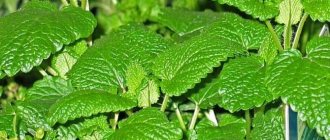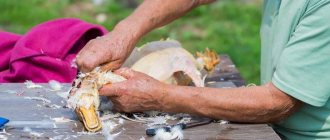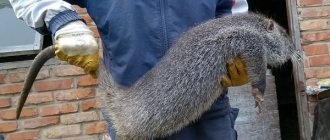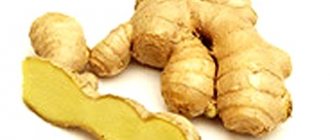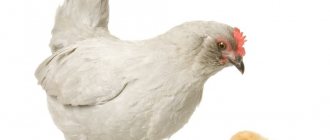Plant diseases and pests, methods of combating them
Mandarin diseases can be associated both with improper care and damage to the plant by fungal infections. Yellowing of the leaves of the tree occurs due to lack of moisture or overfeeding with fertilizers. If, after eliminating the causes, the tree continues to hurt, then it is necessary to identify the symptoms of the disease:
- When a viscous brown liquid—gum—begins to be released from the trunk of a tree, the plant is infected with insects or there is a lot of potassium fertilizer in the soil. In this case, the tangerine is replanted, not forgetting to put a layer of drainage in the new pot.
- The appearance of sticky sooty deposits on the leaves indicates an infection. Using a swab moistened with water, the plaque is washed off, and the tree is given a shower.
- Leaf spots are caused by parasitic fungi. It is necessary to quickly spray the plant with fungicides, otherwise the tangerine will die.
- Anthracnose is recognized by dark brown spots on the leaves that look like burns. The disease is provoked by a large amount of moisture in the air, a lack of phosphorus and potassium in the soil. Rotting branches are cut off and the bush is treated with a fungicidal preparation.
- Powdery mildew appears as a white coating on parts of the plant. A product containing copper, as well as ventilation of the room, will save the tree from disease.
Among the pests that are dangerous for tangerines are aphids, spider mites, and scale insects. You can control pests manually by collecting their colonies from leaves. Spraying with a soap solution will also help. Among the folk remedies, garlic infusion destroys spider mites.
In case of severe damage, insecticides cannot be avoided. Treatment is carried out three times with an interval of ten to twelve days. Compliance with the rules of care and growing conditions for tangerine will allow the tree to remain clean from fungi and pests. Growing a tangerine tree at home is interesting. It will give joy and beauty during flowering and fruiting.
More information can be found in the video:
Why do tangerine leaves turn yellow?
1. The leaves on the tree begin to turn yellow if the plant was replanted without following the proper rules. The root collar may be slightly deepened.
2. Also, a large pot can cause a similar problem. Correct everything, the plant will recover.
3. If the tangerine tree has been feeling fine for a long time and suddenly begins to shed its leaves, do not panic.
4. A plant at rest may shed yellowed leaves. Most often, this process occurs in the off-season. You should also reduce watering.
Fertilizers for plants
Growing a tangerine tree in a pot is impossible without adequate nutrition. The supply of nutrients in the soil substrate, even if it is prepared according to all the rules, is enough for 3 months.
In the future, the plant should be fed with mineral and organic fertilizers approximately once every 2-3 weeks, not more often. In the spring, during the active movement of juices, the formation of new buds and buds, replenishment is carried out more often; during the period of winter dormancy, their amount is reduced. Fertilizers are applied in the first half of the day.
Mineral mixtures
The main elements that tangerines need for successful growth and ovary formation are nitrogen, phosphorus and potassium. Therefore, complex mineral mixtures containing these components are used to feed citrus. Fertilizers are used both in dry and soluble states.
Soluble fertilizers are prepared according to the instructions for the drug, without exceeding the specified dose. An excess of minerals is no less harmful to plants than a deficiency. Dry fertilizers have the advantage that they need to be applied less frequently. They dissolve gradually and nourish the seedling as needed.
The disadvantage of this method is that it is not always clear when the plant has absorbed all the elements. In this option, it is difficult to calculate the time of adding recharge in order to prevent an overdose. As in the case of soluble substances, you need to carefully read the explanations and make calculations in accordance with the age of the tree, the amount and quality of the soil.
Organic fertilizers
The most suitable organic fertilizer for indoor mandarin is cow manure, diluted in a ratio of 1:10. In a city apartment it is not possible to prepare such a supplement; it is not necessary to do this.
There are liquid humus already prepared for use on sale. The optimal fertilizing option is a combination of mineral and organic fertilizers in equal proportions.
Timing for pruning
Any time of year is suitable for pruning a tangerine tree. It is required only during the period of active growth:
- when forming a new plant, wait for maximum branching and the appearance of higher order branches;
- When maintaining the shape of the crown of an adult plant, elongated and dry branches are removed.
The recommended period is from late February to early March. This is the time of active growing season for the tangerine tree. In the spring, remove the branches that had fruits on them, as they begin to dry out. In cases of wilting, the procedure is carried out in the fall, preferably in October. When pruning in autumn, the plant needs additional artificial lighting.
Pruning is carried out either before flowering or after the tree has faded.
When to prune an indoor tangerine for the first time?
The first pruning of a tangerine tree is done on a young plant when it reaches an average of 30 cm.
During this period, the first leaves begin to appear on the tree. Pinch each branch after four leaves form on it.
Goals and objectives of pinching tangerines
Pinching is a procedure that facilitates the growth of fruit crops. What does it give:
- Formation of the correct branch structure.
- Limiting the length of branches. The tangerine tree is subject to active growth; in the southern territories its length reaches 4 m in height.
- The formation of small bushes with the correct structure, which have a spreading and beautiful crown.
- Protection from dried branches.
Important! In addition to its main tasks, pinching helps energize the tree and promote healthy and productive growth.
Tangerine grafting
Without grafting, the fruits will be inedible
Growing tangerines at home from seeds is always combined with grafting. Without this procedure, sour, inedible fruits are obtained. It is allowed to graft the plant approximately 2 years after planting. The scion trunk by that time is about 6 mm thick. The grafting is carried out either in the split or under the bark. Sometimes cuttings are replaced by budding.
For any method, the following tools are prepared:
- sharp knife;
- adhesive tape, electrical tape or a strip of fabric;
- garden var.
Hands are washed thoroughly to avoid infection. The procedure is done quickly so that the contact of the sections with air is minimal.
Grafting into cleft
The technique is suitable for beginners and is carried out on mature 3-year-old trunks. A cutting of the selected variety with 2-4 buds is cut obliquely on both sides to form a wedge. The length of the cuts is approximately 3-4 cm.
Then the trunk is cut in two, the depth of the split is 5 cm. The cutting is inserted so that its cambium is in contact with the cambium of the scion on at least one side. The trunk is wrapped with tape or cloth, and covered with garden pitch. The tree is placed in a greenhouse made of a plastic bottle or film until the cutting takes root.
Bark grafting
To graft a tangerine plant under the bark at home, you need experience. This technique is considered more advanced. First, make a 3 cm long cut in the bark. Carefully separate it from the trunk of the tangerine tree. The cutting is cut obliquely and inserted between the wood and the bark of the rootstock. Wrap it with electrical tape and cover it with garden varnish.
For the grafting to be successful, use 3-4 cuttings at a distance of 2-3 cm from each other. As in the previous case, a greenhouse is built, the tree is regularly watered and mineral fertilizers are applied.
Budding
It is easy to plant indoor tangerine at home using a cutting with one bud. The technique is called “budding”. Step by step it consists of the following stages:
- The trunk of the tangerine tree is wiped with a damp sponge at a height of 10 cm from the ground surface.
- A bud with a piece of wood is separated from the cutting.
- An incision is made in the shape of the letter T on the bark of the rootstock trunk. The height of the cut is 2.5 cm, the width is 1 cm.
- The cut is carefully expanded, a bud with wood is inserted there, and covered with bark on top.
- Wrap with tape and treat with garden varnish, leaving the bud free.
- It is good to place indoor tangerines in a greenhouse made of a plastic bottle or plastic film.
The greenhouse is constantly ventilated so that the moisture does not stagnate. When the cutting takes root and sends out the first shoots, the scion trunk is cut by a third at a distance of 5-10 cm from the graft. The top of the cut is covered with garden varnish. It is advisable to tie the indoor tangerine tree to a small peg.
Preparing the soil for replanting tangerines
In search of an answer to the question of how to care for a tangerine tree, it is recommended to explore the options for land suitable for growing a seedling in a pot. At home, you need to do everything correctly.
So, citrus fruits do not tolerate the acidic environment that accumulates peat. For the tree, you need to choose soft and nutritious soil so that it retains moisture, but at the same time has good air circulation.
To prepare the soil for growing young tangerine trees, prepare a mixture of the following ingredients:
- humus from cow manure;
- turf and leaf types of soil mixed in the same proportion;
- disinfected river sand (coarse).
If desired, you can omit the humus; replace it with compost.
When the tangerine tree reaches the age of 3-4 years, fatty clay is added to the base of the soil. It will prevent the tree's rhizomes from drying out and retain moisture for a long time.
It is imperative to line a layer of drainage about 4-6 cm thick in the pot or tub into which the plant will be transplanted. Clay shards, expanded clay or small pebbles are perfect.
Basic recommendations
Experienced gardeners use the pinching method. The main tool is garden shears or pruning shears, which should be disinfected before starting work. Open tree wounds should be treated with garden varnish or tree resin.
Initially, the young plant should be allowed to grow to 15–20 cm, and then the top should be pinched. This will allow side shoots to grow. Citrus fruits have a peculiarity: after the first removal of the top, the side branches may not begin to grow immediately. If the top shoot reappears instead, cut it back until the desired branches appear.
Further developments need to be closely monitored. Be sure to remove overgrown shoots and those that stretch excessively
It is very important to form the crown of a plant in 1-2 years of life. Even if flowers appear on unsuccessful branches, they also need to be pruned
In the future, this procedure should be periodically resorted to before the flowering period or immediately after its end. The shape of the crown should be spherical and evenly developed.
If the crown is too thick, it needs to be thinned out. Perform additional pinching as needed. Leave the length of the main branch no more than 20–25 cm.
When carrying out self-pruning, it is important to consider a number of principles:
- It is not recommended to carry out pruning immediately after transplanting a tangerine tree, because... This is additional stress for the plant. In this case, it is better to wait 3-4 weeks.
- Future tangerine fruits will form on branches of the 4th order, so each branch of the 1st, 2nd and 3rd order is pinched in the upper part.
- If, due to drying out or lack of light, the tangerine tree sheds the upper part of the crown, it must also be trimmed.
It is important that the plant receives enough light after pruning. Daylight hours should be at least 12 hours
If pruning had to be done in the fall, you can use special garden lamps for additional lighting (they can be purchased at a specialty store). If the procedure was radical, after it there may be no leaves on the plant for some time. This is normal and the leaves will grow back later. It is better not to carry out emergency removal of all cuttings at once. It will be better to wait until one branch begins to bush, then you can take on the second.
Compliance with these conditions will allow you to get a healthy and lush bush that will bring positive emotions for a long time.
Circuit and technology
To properly trim a tangerine and form the correct structure of its branches, you need to proceed according to the following scheme:
- Wait until the crown height reaches 30-40 cm. Next, you need to pinch off the top of the tangerine to stimulate the growth of side branches.
- Sometimes a tree may release an upper shoot from a pinched bud. In such situations, you need to pinch the central part of the conductor. The steps are repeated until the tangerine forms young growth on the surface of the trunk.
- Monitor the growth of the tree, and if necessary, trim small shoots that interfere with the full development of lateral branches.
- During the pruning process, you should try to form a spherical and spreading crown shape, which in appearance will make a tangerine shrub.
Reference! If the crown has formed too thick, it must be thinned out using sharp scissors. To do this, it is worth removing shoots that thicken the vegetation.
Necessity of the procedure
To properly pinch an indoor tangerine at home, you need to prepare and disinfect all the necessary tools. What a gardener will need:
- Special scissors for pruning. You can get by with pruning shears or a regular budding knife.
- Plant nutrition products. These include garden pitch, resin, and drying oil-based paints.
Any time of year is suitable for pruning a tangerine tree. It is required only during the period of active growth:
- when forming a new plant, wait for maximum branching and the appearance of higher order branches;
- When maintaining the shape of the crown of an adult plant, elongated and dry branches are removed.
Pruning is carried out either before flowering or after the tree has faded.
The first pruning of a tangerine tree is done on a young plant when it reaches an average of 30 cm.
During this period, the first leaves begin to appear on the tree. Pinch each branch after four leaves form on it.
In order for the tangerine tree to recover faster, after pruning it requires complete and competent care:
- Provide sufficient light. Daylight hours – at least 12 hours. In autumn, the lack of sun is compensated for with special garden lamps.
- Water the tree thoroughly 2-3 days after removing the branches. Irrigation with warm water from a sprayer is preferable.
- The tree is fed 7 days after the procedure using complex fertilizers for citrus fruits.
- To ensure uniform development of the crown, the tangerine tree is periodically rotated around its axis.
- In winter - the dormant period - they are placed in a cool place (for example, on a balcony) with a temperature in the range of 12... 16°C and a humidity of about 60%. Watering is carried out 2 times a week, fertilizing is not required.
If the procedure was radical, the leaves on the tree may be absent for a long time. Therefore, it is recommended to trim the branches one by one, without removing all the shoots at once.
Proper development of the crown is very important, because without proper pruning the plant will not bear fruit or the fruits will be small and taste bitter. This procedure allows you to remove weak and non-viable branches in a timely manner, giving others the opportunity to gain strength
Frequent and proper pruning has a beneficial effect on the active growth of the tree.
This procedure allows you to remove weak and non-viable branches in a timely manner, giving others the opportunity to gain strength. Frequent and proper pruning has a beneficial effect on the active growth of the tree.
Methods of propagation of citrus crops
Mandarin is a shrub that is ever green all year round. Comes from the fruit family and genus - citrus fruits. The form of life is a bush, in the form of a tree.
Homemade tangerine can be grown in greenhouses and at home: window sill, balcony, greenhouse. Breeders have bred a huge variety of this plant. This tangerine is an effective show-stopper in a pot.
Photo: tangerine tree at home
Homemade tangerine has very tasty and aromatic fruits; they grow on the tree for more than two months. Such a plant attracts and gives pleasure both with its flowering and the unsurpassed smell of its own flower.
The mandarin bonsai is a rare and masterful piece. Tangerine fruits grow without pollination; the stage of maturity occurs at the end of the year. The most famous and beloved varieties for growing tangerines in the house include:
- Shiva is a mikan. Early and fast growing species
- Mirkot is a compact variety with sweet, summer-ripening fruits
- Winshiu is an unpretentious plant from a Japanese variety, branches well and bears fruit in the third year
- Clementine - the variety bears fruit in the second year, at home. Refers to a hybrid of mandarin and orange. The fruits have a shiny skin, are slightly flattened, and their number per harvest reaches five dozen.
Read more: Reproduction and mating of ferrets at home
Ancient China was the first to cultivate mandarin ducks. Today such a plant can be purchased in flower shops.
tangerine at home
- If you purchased a plant from such a store, it is better to replant it immediately. To do this, buy a substrate specifically for citrus fruits, where the acidity is 5.5 -7. It is also possible to make your own soil. To do this, it is necessary to mix turf and leaf soil with manure humus and river sand, where the proportion looks like this - 1: 1: 1: 0.5
- Look carefully at the pot in which the plant was brought from the store; its next place of residence should be no more than three centimeters more than the previous one. All these actions will actively stimulate the tangerine to grow
One of the first steps is to choose a place for the mandarin to live in your apartment.
- Proper lighting is one of the most important keys to the growth of your pet. This rule also applies if the tangerine is planted in open ground in a country house or greenhouse. Direct sunlight should hit the plant, but without much persistence. Sunlight will give the leaves juiciness and greenness, a lack of light will only lead to fading and thin new shoots
- The window on which the tangerine will be grown should be located on the east or southeast side. If the growing season is summer, you need to gradually accustom the plant to direct rays, sometimes take it out onto the balcony or street
- If the time of initial cultivation is winter, place the tangerine in the most illuminated place; if there is not enough light, purchase artificial lighting. It is possible to use a photo light bulb for this purpose
- The optimal temperature for indoor tangerine remains 25 degrees; if the period of budding and flowering passes, keep the temperature around twenty degrees
- The rest regime in winter is maintained at a level of five to ten degrees. A plant that has had a good rest in winter will bear much better fruits and flowers.
Growing tangerines from seeds will require your attention and patience only at the first stage, then this crop is easy to care for. Prepare a place for the plant to live. Which excludes the presence of various poisonous neighbors.
A southern room without any neighbors would be ideal. We take material for planting from store-bought tangerines. The number of seeds should be as large as possible, since most of the next shoots will die from the disease and will not survive the grafting stage. Growing tangerines from seeds occurs in several ways:
- We take a small piece of gauze, irrigate it with water, and wrap the bones. Water should be in a minimum amount to avoid rotting of the seeds. Experienced specialists suggest using a solution of potassium permanganate for this process to disinfect seeds
- To avoid problems with gauze, you can purchase hydrogel in a specialized store. Its peculiarity is its excellent ability to retain moisture. It looks like a certain mass into which tangerine seeds are aged for pecking and the appearance of sprouts
It is possible to plant the seeds immediately, in open ground. Most gardeners do it this way. If you have extensive experience in growing plants and flowers, you can easily ensure that the bud does not dry out. The leaves will hatch here later than all types of cultivation, but the sprout will be very strong
- Home grown tangerine tree
When you see the first sprouts of your pet, you need to start feeding for the next two weeks. It must be carried out using specialized organic and mineral fertilizers. Care consists of watering and irrigating the sprout and constantly adding fertilizers.
Spraying the tangerine should occur every week to maintain high humidity of the tangerine. It is also possible to keep a bowl filled with water near the tree. Especially when the summer is hot, the plant needs moisture. In winter, watering should be done two to three times a week, depending on dryness.
Fertilizing the tangerine plant should be carried out in the period April-September, especially if it is a fruit-bearing citrus. This will ensure the sweet taste of the fruit.
tangerine plant
Full-fledged, delicious tangerine fruits can only be obtained as a result of proper care and grafting. Grafting begins in May-August. Since sap flow is especially active at this time.
The effectiveness of the result after vaccination depends on your ability to carefully and quickly carry out the appropriate procedures. Prepare in advance for the tangerine grafting stage:
- A plant grown from seed, the trunk of which is at least six millimeters thick
- Cutting from a fruiting plant, the branch of which is at least two years old
- Garden knife
- Elastic tape
- Var garden
For grafting, make an incision at a height of ten centimeters, where the trunk of the rootstock is. It should look like the letter T, horizontally - 4 cm, vertically -4 cm. The scion is prepared by removing thorns and leaf blades. Very carefully cut the bud and insert it into the cut, with a small layer of wood.
Where the vaccination was carried out, wrap it with tape. Place the tangerine in a plastic bag or jar. Only after a month will you be able to determine the degree of success of the vaccination. It is better to take several seedlings for grafting, because only half of them will be successful.
Accustom the plant to grafting by gradually removing the jar, then the new shoot will strengthen and begin to grow. Cover the location of the shoot with garden varnish.
leaves of a tangerine tree affected by parasites
- The most dangerous harmful factors for mandarins include: aphids, flies, red mites
- To cope with pests, it is enough to prepare solutions at home or purchase them at a specialized store.
- To prevent insects from multiplying and disappearing, it is possible to prepare a weak garlic solution or a solution of onion peels. They will create an active fight against insects and an unfavorable environment for their development.
parasites on tangerine tree
- Chemical solutions may be more harmful to the growth of tangerines and will not have a favorable effect on your existence in the apartment
- If you carefully observe and care for the plant, it is possible to completely avoid the appearance of various parasites
- Monitor the moisture level in the plant. Overwatering will lead to blackleg disease and subsequent death of the pet.
- Only fertilizing and fertilizers will provide your plant with a full-fledged existence.
- The existing soil in the pot is washed away very quickly and recreational processes do not occur
- To feed the plant, you should use fertilizers of a dry and soluble consistency. The time to increase feeding is spring. For the development of vegetative buds
- Feeding time is the first half of the day. If the fertilizer is liquid, we use spraying and watering. As an additional care for tangerines, pinching the plant is used. To create fullness
Read more: Cherry Valley Ducks breed description
If you follow the rules for growing and fertilizing tangerines, the leaves of the plant will be forever green. The leaves will turn yellow as a result of improper behavior with the pet. Don't go overboard with chemical fertilizers. If the tangerine is not grown correctly, it will become stained and the leaves will fall off.
- Proper plant care includes replanting the plant. This event is carried out if the tangerine becomes cramped in the pot. Early plants and young ones are replanted every year
- Tangerine trees over seven years old are replanted every two years. To replant a plant, you need to take a pot with a diameter greater than five centimeters from the present one so that the roots do not rot. The substrate should be selected with low acidity, the bottom of the pot should be lined with expanded clay and pieces of polystyrene foam
- The actual transplantation process is carried out not during the flowering of the plant, but in the spring, during the awakening period of the tangerine. The soil is laid by watering after transplanting. Do not use fertilizer two weeks after transplanting, and four days before transplanting
Photo: tangerine at home
Reproduction of a tangerine plant occurs in two ways: grafting onto a rootstock and rooting an apical cutting. This process is carried out at the very beginning of the summer period. Be sure to use root-forming agents that will stimulate growth. Grafting is the most effective and successful method of propagation.
Pruning is carried out to improve the formation of the crown of the desired shape, to stimulate fruiting. As the tree grows, it loses its compactness and attractiveness.
The process is carried out on young plants using a sharp knife and pruning shears. Branches from the first to the third order are subject to pruning. The fourth ones should not be touched, as they produce fruits and flowers.
Mandarin (Citrus reticulate) belongs to the large group of Citrus fruits. The crop is a tree or shrub, reaching 5 m in nature. Of all citrus fruits, tangerine is the most winter-hardy and productive plant.
Conditions for keeping the plant at home
The tangerine tree, caring for which at home comes down to following certain rules, can delight owners not only with its exotic appearance, but also with delicious vitamin-rich fruits.
Lighting
For a southern resident, bright light is required, but with shading from the scorching rays of the sun in the summer. A plant located on eastern, southern or western windows feels good. If it is possible to move the tree to the garden or balcony in the summer, it is also necessary to provide it with light cover from direct rays.
Lack of sunlight affects the appearance of the plant. Its foliage becomes faded, its shoots become thin. Under such conditions, the tangerine produces very few buds or does not bloom at all. In winter, when daylight hours are short, the pot should be placed in the sunniest place. Sometimes additional artificial illumination with a phytolamp is not superfluous.
Temperature
The optimal conditions for tangerine fruiting are temperatures within 15-20 degrees Celsius. The plant also requires winter rest, when the temperature must be reduced to 12o.
Humidity
Mandatory daily spraying is required in summer in hot weather and in winter when kept in a room with central heating
During flowering, this procedure must be performed carefully so that water does not get on the flowers.
Soil and drainage
The soil for a tangerine tree should consist of the following parts:
- turf land;
- leaf soil;
- humus with manure;
- sand.
The correct soil composition for growing a tangerine tree.
The ratio of components is 2:1:1:1 for young plants and 3:1:1:1 for an adult specimen. To strengthen the roots when transplanting a mature tree, add a little rich clay to the soil. Remains of building bricks, small stones, pebbles, and expanded clay are used as drainage.
Watering
In summer and spring, daily watering in the first half of the day becomes mandatory; in very hot periods, additional moisture in the evening is possible. The amount of water depends on the size of the plant itself, the density of the crown, the size of the pot, and the air temperature in the room.
Starting from October, watering is reduced to 1-2 times a week, preventing the earthen clod from completely drying out. Water for this procedure is used at room temperature.
Homemade tangerine from a seed in a pot - growing features
Home orange and tangerine are flowering evergreen plants. Belongs to the genus Citrus, rue family (calamondin). The height is 4-5 meters. Productivity varies from 5,000 to 7,000 fruits per tree.
The crown is round and spreading, with a diameter of about 3.5 meters. The bark is light gray. Young shoots are dark green. The leaves are leathery and small in size. They are ovoid in shape, pointed at the end.
Photos of a tangerine tree can be seen in specialized literature.
Of all the citrus fruits, tangerine can be grown both indoors and in the garden in regions with warm climates. A small tangerine tree branches heavily. Its crown of light gray stems is covered with leathery, lanceolate-type leaves. Green plates are located on small petioles. The lifespan of one leaf reaches four years.
Tangerine blossoms begin in May, and the fruits ripen at the end of October. The clusters of inflorescences are decorated with small white flowers. They have a pleasant aroma. Fruiting of the plant occurs in the third or fourth year of life, and then under normal conditions – annually. At first, the oval, slightly flattened fruits have green skin.
But over time it turns orange. The peel is easily separated from the flesh, which has a sour taste, although with a small amount of sugar. There are also sweet varieties of tangerines. Varieties of dwarf trees have been bred for indoor floriculture, reaching a height of 40-50 centimeters. A tangerine tree at home can become a decoration and bear delicious fruits.
How to form a crown by pinching
You can shape the crown of a lemon not only by pruning, but also by pinching it. You need to pinch the shoot when it has reached the desired length, but not later. Therefore, you need to gradually form the lemon crown by pinching throughout the year.
The first pruning is also replaced by pinching when the trunk of a young tree reaches a height of 20-25 cm.
After this, the tip of the shoot, along with the upper leaves, is pinched. Further, when level 1 shoots appear on the trunk, they are also pinched, and precisely when their length becomes 1-2 cm longer than the generally accepted norm, namely, a length of 25 cm.
Then, gradually, as the shoots grow, they need to be pinched. This is how the crown of a lemon tree is formed without pruning. This is better for the tree, since pinching occurs gradually, 1-2 shoots at a time, so damage to the plant is insignificant.
Formation of the crown of citrus fruits grown from seeds
Step one
After the seed germinates, a shoot is formed from the seedling or rooted cutting; it is called a zero-order shoot. For this single-stem seedling, while it has not yet become lignified, we pinch the crown (growth point) so that the height from the ground is 25-30 cm. This process is called pinching. After pinching, the growth of the zero shoot stops and it begins to ripen.
Step two
When the ripening of the zero shoot ends, the citrus is ready for new growth, and we cut it to the required length. Traditionally, it is recommended to leave 15-20 cm, some gardeners cut it even shorter - leaving about 10 cm. In any case, it is desirable that at least four leaves remain on the zero-order shoot.
Step three
New shoots begin to grow from under the leaves remaining on the shoot. Usually, when pruning a zero shoot, the bud of the topmost leaf or two buds begins to grow, less often all three. To form a profusely fruiting tree in the future, it is necessary to ensure that three, or at most two, new shoots begin to grow. These will be shoots of the first order. If they don’t want to grow, only one new shoot stubbornly climbs, we break it out (breaking out differs from pruning in that the shoot is removed completely under the base). We are waiting to see if the remaining kidneys wake up. If they don’t want to start growing, then we break out the leading shoot again.
And so on until we get the simultaneous development of two or three shoots of the first order. Ideally, it is better to get four first-order shoots, but in reality this does not always happen.
Step four
If we managed to get three shoots of the first order, we allow the one above to grow upward and direct two to the sides. Those. You can fix the shoots in certain directions using flexible wire, but make sure that it does not injure the bark.
If we managed to get four shoots of the first order, then we direct them like a fan, in different directions, moving them apart so that the shoots do not interfere with each other or block the light. Very often the shoots stretch upward in a crowd so that from the outside you cannot see which branch is which and in what order. At the same time, young citrus fruits are formed very easily with wire.
Tip 3: How to care for indoor tangerine
In a young plant, during flowering, some flowers must be removed. This way the tree will not become depleted and several full-fledged fruits will be able to grow on it. It’s good when there are about twenty leaves per ovary. The fewer fruits there are on the tangerine, the larger they grow.
In a fruit-bearing tangerine, the branches with fruits must be tied to a support, otherwise they may break due to the weight of the fruits. A plant without fruits will not have the same attractive appearance.
Mandarin growing at home must be protected from pests and possible diseases. The most common pests are mealybugs, scale insects, and red spider mites. Spraying the tree with a soap solution helps against scale insects. For three liters of water you need to take a couple of tablespoons of liquid soap and dilute it. First, it is better to clean off the pests by hand and only then spray. The solution should be kept on the leaves for half an hour, after which everything should be washed off with clean warm water. If a plant is damaged by spider mites, it should be collected by hand if possible, wipe the foliage and branches with cotton wool soaked in alcohol or cold water, then spray with a two-day infusion of garlic or onion - crush 200 grams and pour three liters of boiled warm water.
If the plant is affected by mealybugs, remove the pest with a cotton swab and spray with garlic infusion. The procedure must be repeated three times every seven days. If the pest infestation is severe, you should use some strong chemical. It must be used in strict accordance with the attached instructions.
Required Tools
Before starting the operation, it is advisable to prepare and disinfect the instruments in advance.
Choose pruning shears, pruning shears, or a sharp knife.
Important components of the process are means for treating the open wound of the plant (garden pitch, tree resin, painting on natural linseed oil).
Further care
In the summer, the tangerine is taken out onto the veranda, trying to provide it with the opportunity to bask in the gentle rays of the sun.
Watering is done carefully so that drops do not fall on the flowers, twice a day. Fertilizer is added periodically
In the colder winter period, the plant is transferred to a room with a temperature of twelve to sixteen degrees, giving it the opportunity to rest. This is the time of rest for the tree. Water it twice a week. No fertilizing is provided.
As the tangerine grows, it is replanted, giving it a freer pot that matches its size. This is done by the transfer method. If replanting is not possible, two-thirds of the soil is renewed.
First-year plants sometimes produce buds. They are carefully removed so as not to waste the tree’s strength. If necessary, part of the ovaries is left.
Initially, the tangerine tree is positioned in such a way that it receives enough light, but cannot get burned and shed its leaves.
Pinching the ends of the shoots, pruning the upper part of the tangerine, together with watering and fertilizing appropriate to the time of year, allows you to create a beautiful, strong tree-bush, pleasing not only the eyes turned to it, but also bearing delicious aromatic fruits.
Recommendations for caring for a lemon tree
Lemon can be grown indoors from a seed or from a cutting. The first option is much more expensive than the second. In addition, a specimen from a seed most likely does not inherit the characteristics of the varietal plant.
It can grow very large and will need to be heavily pruned to grow indoors.
If you grow a lemon from a cutting, the cutting must be cut from a varietal specimen. Then a real indoor compact lemon will grow in the apartment, which will not need to be grafted to bear fruit. Caring for indoor lemon is not difficult:
- It does not tolerate waterlogging of the soil and drying out of the earthen coma;
- Watering it should be regular;
- The temperature and humidity in a city apartment are completely suitable for growing lemon;
- As it grows, it is necessary to form the crown of the plant. This can be done by trimming or pinching.
But the main thing is that the formation of the crown is a necessary stage to ensure abundant flowering and fruiting of lemon.
Formation of a standard tree
Depending on the height of the trunk (trunk), the trees can be:
- high-standard – the height of the standard reaches 30 cm
- medium standard – height up to 20 cm
- low-standard – standard height 10 – 15 cm
To form a low-standard lemon, grapefruit, lime or any other citrus fruit, after the young plant reaches a height of 15-20 cm, before the start of its next growth (late February - early March), the top is cut off, leaving 4-7 leaves. After this, 4–6 shoots will begin to develop from the lateral buds. Of these, you need to leave only 3-4 shoots going in different directions (first-order shoots). When these lateral branches have completely finished growing, their tops are also cut off, leaving 3-5 buds on each of them in the axils of the leaves. The last bud should look outward rather than inward. The growth of branches (second-order shoots) will begin again from the lateral buds.
Subsequently, pruning is carried out until branches of the fourth order are formed.
Rejuvenation of old citrus trees
A lemon tree is rejuvenated at 14–20 years of age, when its fruiting declines. By this time, the plant is already quite powerful, dense, and the branches are quite thick. Not every windowsill will fit such a specimen, but even in the room, lemons and oranges are quite spread out - the fruit shoots do not grow upwards, but to the sides.
Optimal timing and general rules for pruning lemons when growing at home
Inept pruning of a lemon will not benefit the plant, but harm it and may even destroy the plant. Therefore, when starting the procedure, you need to be guided by the following rules:
- Use only clean, disinfected and sharp tools.
- If the tree is already bearing fruit, before pruning you need to remove the entire crop, even the lemons that have not yet ripened.
- Shoots of the first order are shortened the most - by 25 cm, of the second - by a maximum of 10 cm, the thinner branches that form on them - by 5 cm, no more. If you have reasonable doubts about your own eye, do not be lazy to measure the required length. An error of 1–2 cm can disrupt the normal growth of the tree.
- After spring pruning, move the lemon closer to the window. This way it will quickly “feel” the increase in daylight hours and begin to grow.
- After pruning, provide the lemon with nutrients by feeding it after 7–10 days. Regular watering will also help it recover faster.
- “Fattening” sprouts, which definitely won’t bear flowers or fruits, can be cut off throughout the season. The same applies to parts of the plant affected by diseases and pests.
- Lemons that are 1–2 years old rarely produce flowers. They need to be cut off immediately. If this is not done, the tree may survive, but it will never bear fruit. No more than 5–10 flowers can be left only on a three-year-old lemon. Each of them should have 15 leaves.
- The optimal shape of a lemon crown is flat. In this form, it is evenly illuminated and warmed by the sun.
- If you want strong new growth, trim selected branches short. Pinching will ensure the formation of new flower buds.
There is no general opinion among gardeners regarding the best time to prune a lemon. The period of flowering and fruiting is definitely excluded - the plant spends a lot of energy on this, pruning drains it more. The lemon may not recover from such “stress.” Also, you should not prune the tree at the junction of summer and autumn. The procedure stimulates branching, and before the onset of the dormant period, the lemon does not need new shoots at all.
The lemon will most likely not survive pruning during fruiting.
Most often, the bulk of lemon pruning work is carried out at the end of the winter hibernation period. It lasts from October-November to February-March. Plan the procedure for early March. But the leaf buds should not “wake up” by this time.
A lemon whose growth buds have already activated and sap flow has begun should not be radically pruned.
They begin to gradually thin out the crown in January-February. If the goal is to increase the yield of an already fruit-bearing plant, pruning is postponed to the beginning of the dormant period.
When can it be done?
Forming a money tree is not difficult, just learn the basics of this art. Do regular pruning in the spring. If you shape the trunk and top during this period, the tree will hold its shape better. The procedure is carried out from March to May. In the summer, corrective pinching is done, asymmetrically developing shoots are removed, and new growth is stimulated where the crown seems bare.
When working with a wicker ficus, it is cut evenly along all trunks. During the winter, remove any dead or dying branches as they use up the plant's resources for normal growth and the production of new leaves. Disease-affected branches are cut off immediately.
Formative pruning
To form the crown of the desired shape and stimulate fruiting, you need to do formative pruning.
As the tangerine tree grows, it expands, losing its compactness and attractiveness, so it requires regular pruning. It is carried out on a young plant using the pinching method - the central trunk is pinched at a height of about 30 cm from the soil. For an adult tree, pruning is done with a sharp knife or pruning shears. The central shoot must be removed. With it, the crown will not have such a decorative appearance. And new unattractive shoots will form on it. But most importantly, this shoot usually does not bear fruit, since flower buds do not form on it.
Only the strongest branches are left, growing symmetrically, in the amount of 3-4 pieces. They are pinched or trimmed by 10-15 cm. Second-order branches appear on them, which also require pruning. Third-order branches are also pruned. But the fourth, growing horizontally to the sides, produces flowers and fruits. Also remove all unnecessary thickening branches that grow vertically upward or inward.
In addition to pruning, a young tangerine tree requires an annual transplant into new nutrient soil and a larger pot. The transplant is done after a period of rest. Adult plants are replanted less frequently, once every 2-3 years, as they grow.
Mandarin is more resistant to grafting than other citrus plants. You can literally learn to plant all kinds of exotic citrus fruits on it - it will only grow even better from these experiments.
Features of the development of citrus fruits
The growth and development of citrus fruits in nature and on our windowsills is significantly different from other indoor plants. The specificity of development is determined by the cyclical nature of the growing season. From spring to autumn, these plants experience three peaks of development:
First growth, spring, from about mid-March to June. At this moment, new shoots and leaves grow powerfully. But suddenly growth stops and the lull (lack of growth) lasts until the young shoots mature.
We take care of the tangerine tree to get a beautiful specimen
The tangerine tree is becoming increasingly common in gardeners' collections; caring for it at home is not particularly difficult if you follow the rules.
These are miniature citrus fruits with a neat and attractive appearance. The bright orange fruits are especially decorative, for which this plant is purchased.
You can buy a tangerine tree ready-made in flower shops or try to grow it yourself.
When purchasing a finished tree, you should pay attention to whether it is really a tangerine. The fact is that sellers often offer calamondins instead
They are similar to tangerines, but do not have a pronounced citrus smell and taste.
That is why lovers prefer to grow tangerines themselves from seeds or purchase a seedling from a nursery.
The following species grow most successfully in indoor conditions:
- Clementine is a hybrid; it produces a harvest in the second year, and an adult specimen produces up to 50 fruits per year.
- Murcott - produces sweet fruits and is compact.
- Shiva-mikan is fast-growing, compact, with small fruits.
- Vasya - hybrids up to 80 cm tall, the fruits ripen in the second year.
If you decide to try growing a tangerine tree yourself, it will definitely reward you with its beautiful appearance and aroma.
Formation of the crown of a fruit tree
If you already have an adult, grown lemon tree (and other citrus trees), then you can trim the branches and form the crown throughout the year, but it is better in the spring (April - May). The shoots grow constantly, the tops grow especially vigorously - these shoots need to be cut out regardless of the time of year (if you do not want to use them in the future - this is also possible).
The formation of an already mature large plant with branches of 5, 6 or more orders is carried out as your soul tells you. Step back and evaluate the shape of the crown from the side. Usually it is trimmed so that the lemon or orange really looks like a miniature tree. Some citrus fruits, such as calamondin (citrofortunella), due to genetic characteristics, grow not as a tree, but as a bush. Then your task is to maintain the even shape of the bush, trim the branches that grow inward and not outward.
If you have grafted a fruit tree or wildflower grown from a seed, after successful fusion you need to correctly direct the graft. The shoot that grows after grafting is tied to a stick stuck into the pot so that it grows straight. The growing scion should be trimmed at a length of 12-15 cm. In the future, it should be formed in the same way as described above, counting the order of the branches of the scion, not the rootstock.
Lemon trees, propagated by cuttings, layering or grafting, bear fruit on branches of the 4th–5th order, running to the side. When using a low-standard form in a tree grown from a cutting or layering, branches of the 4th–5th order are formed by the end of the second year of life. Such plants bloom and can bear fruit already in the third year. On three-year-old lemons, first remove half of the buds, and then leave 2-3 fruits from the remaining ovaries, on a 4-5-year-old plant - 6-7 fruits, on a 6-7-year-old plant - up to 10 fruits. With this rationing of the harvest, the correct development of the lemon tree is ensured.
Growing conditions: lighting, humidity, temperature
The tangerine tree is a crop that grows in Eastern countries, where there is a lot of sun and warmth. Place pots with plants on the southeast, southwest sides of the house. If the sun shines brightly at noon, then the leaves of the tangerine tree should be shaded.
But in winter, the lack of light is compensated by organizing lighting. Hang a fluorescent lamp at a distance of 20-30 centimeters from the container with tangerine. Indoor humidity does not play a special role in the development of the tree. It should be at the level of 50 - 60 percent. The plant tolerates slight drought easily.
And the optimal temperature for keeping indoor tangerine is from 18 to 25 degrees Celsius in summer. In winter, the temperature drops to plus ten. If the tree rests in winter, it will begin to develop more actively in the spring.

